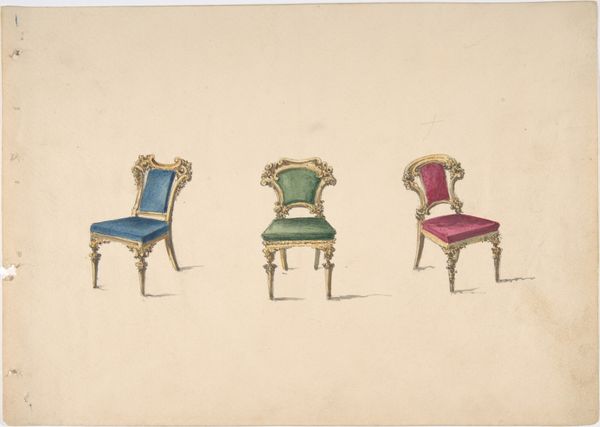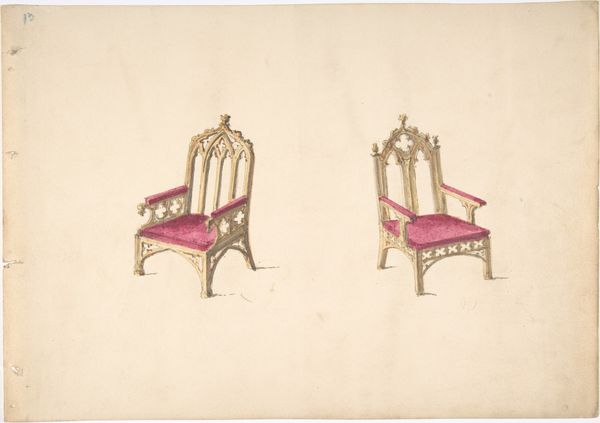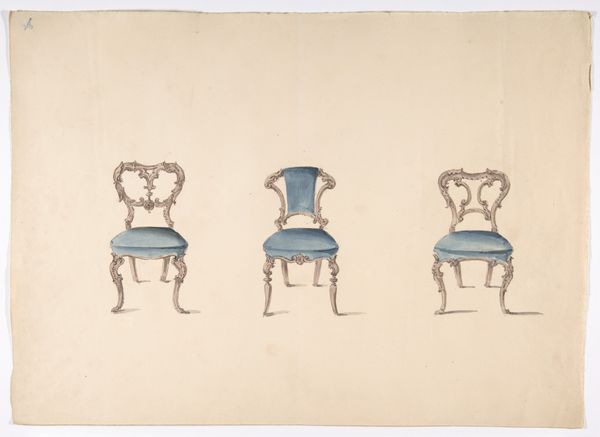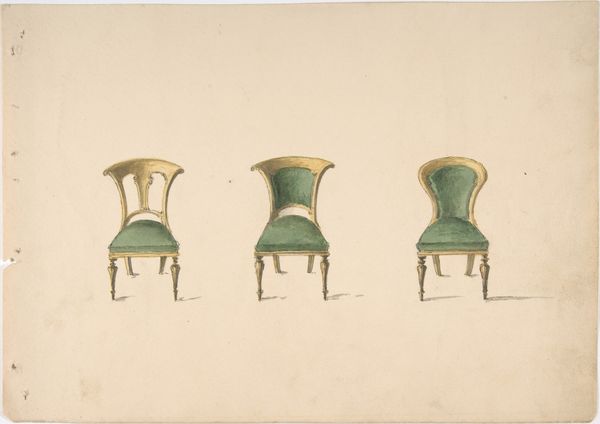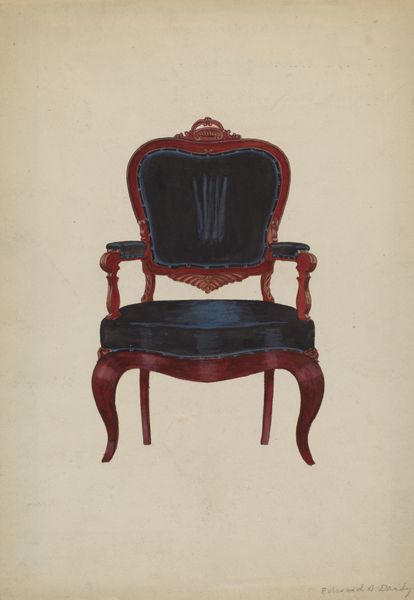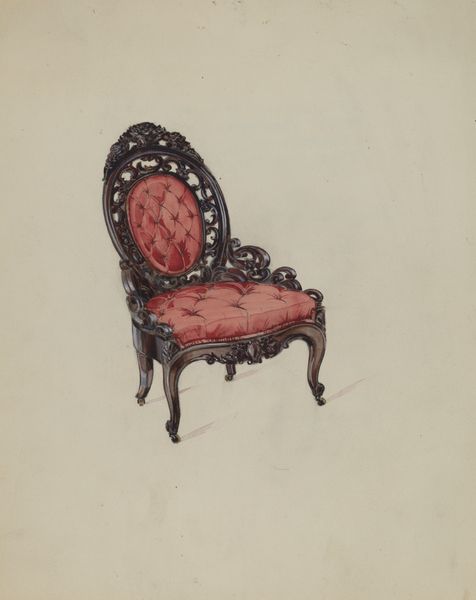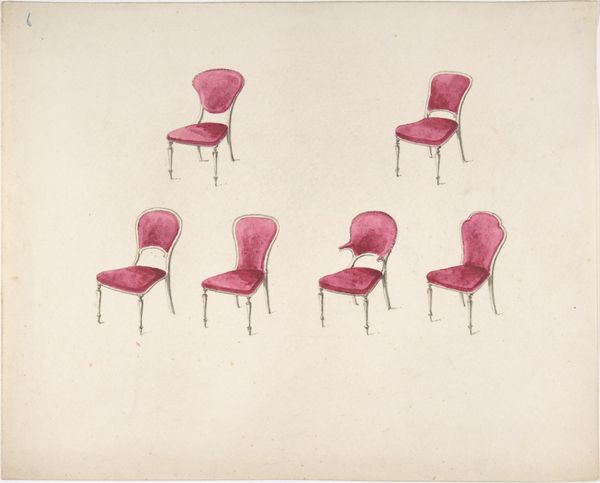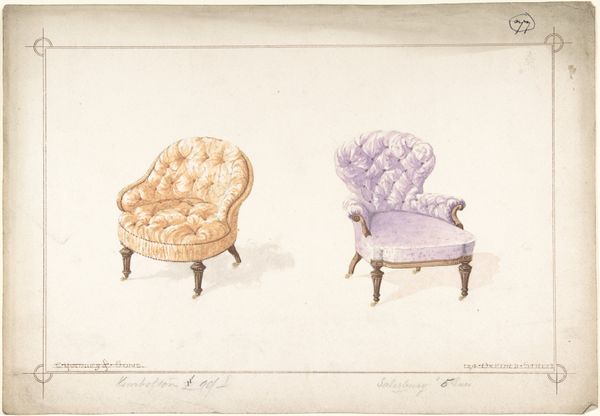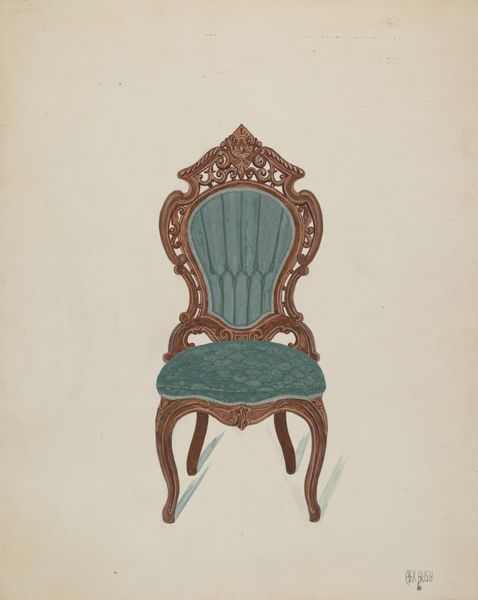
drawing, print, watercolor
#
drawing
#
neoclacissism
#
water colours
# print
#
watercolor
Dimensions: sheet: 9 15/16 x 14 13/16 in. (25.2 x 37.7 cm)
Copyright: Public Domain
Editor: Here we have an early 19th-century design – *Design for Three Chairs with Red Upholstery* – likely made between 1815 and 1825, Anonymous made this drawing with watercolor, amongst other mediums. I am struck by how intimate and almost domestic the chairs feel. What are your impressions? Curator: It’s interesting to view these chairs not simply as functional objects but as potent symbols of social status and shifting power dynamics. These are designs likely intended for a specific class. What narratives about privilege and exclusion might they suggest, considering the context of early 19th-century European society after the Napoleonic wars and before significant democratic reforms? Who would have had access to these objects, and what did that signify? Editor: That makes me think about access. It's just a watercolor. Did the artist intend this to be for everyone to admire, or just a specific clientele? Curator: That’s precisely where we need to situate our thinking. Was this watercolor intended for public consumption or restricted viewing within a specific workshop? This is neoclassical aesthetic, isn’t it? What happens to Neoclassical ideals like austerity, integrity, and moral virtue when you place them next to sumptuous upholstery and ornate detailing? And doesn't the repeated, regimented composition reinforce these values of stability and hierarchy in a world desperate for both? Editor: I hadn't considered the repetition of the design! I guess each chair is perfectly uniform in size and shape. Curator: Uniformity itself becomes a symbol. This points to the broader visual rhetoric deployed by dominant classes to establish their perceived order and control. This control is both in society, but also their households and how they adorn it with furniture, perhaps these chair designs were a way of reminding everyone of their place. It is not just about liking the drawing, but also questioning whose story gets told through art and design and whose remains in the shadows. Editor: I never considered design so...political! It’s helped me rethink assumptions I had about its purpose and reception. Thanks! Curator: Likewise! It reminds me that we must never accept design at face value. Everything has political meaning behind it.
Comments
No comments
Be the first to comment and join the conversation on the ultimate creative platform.
